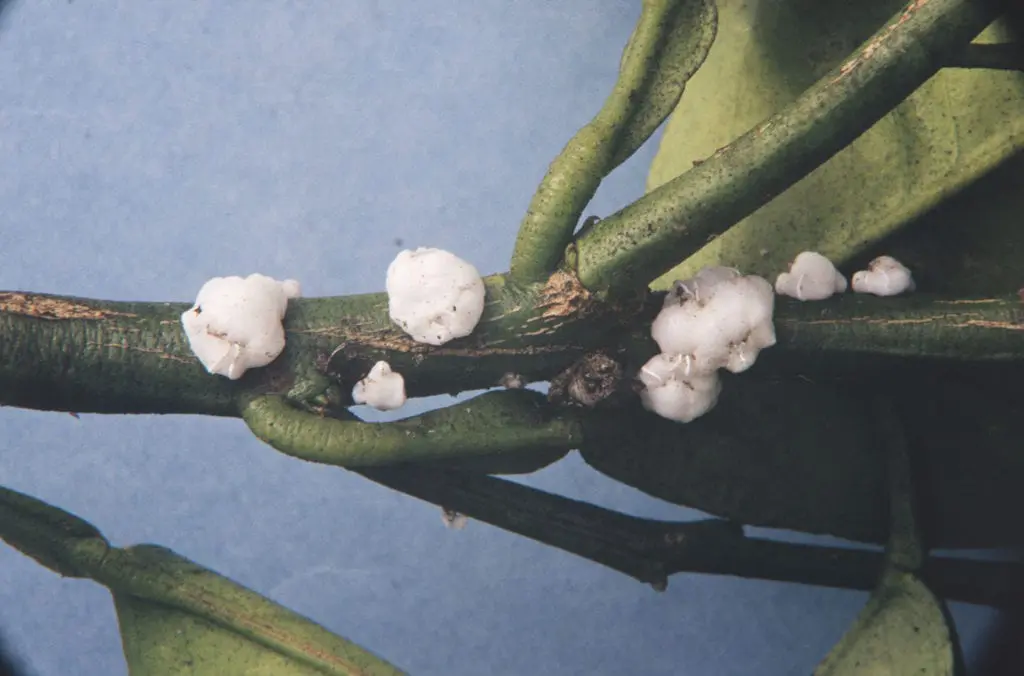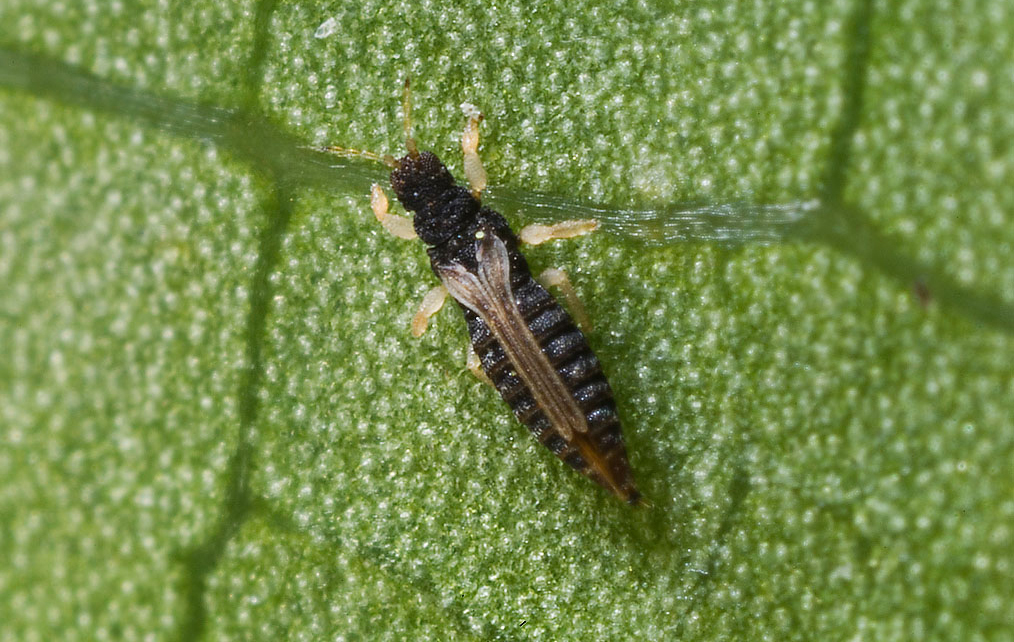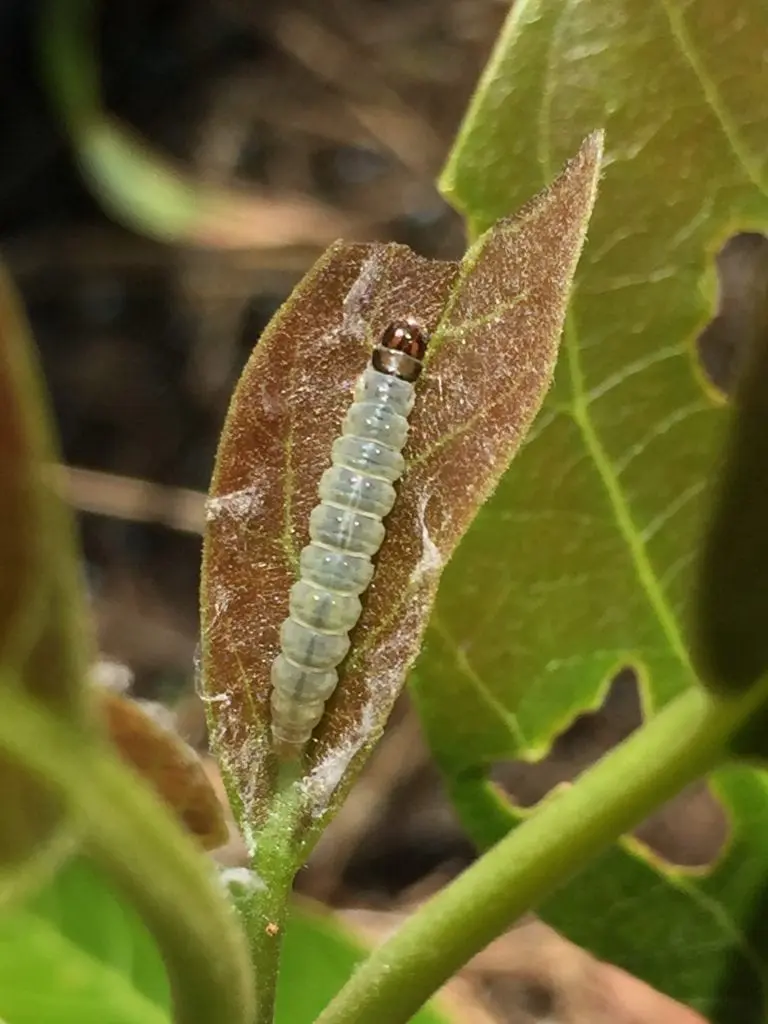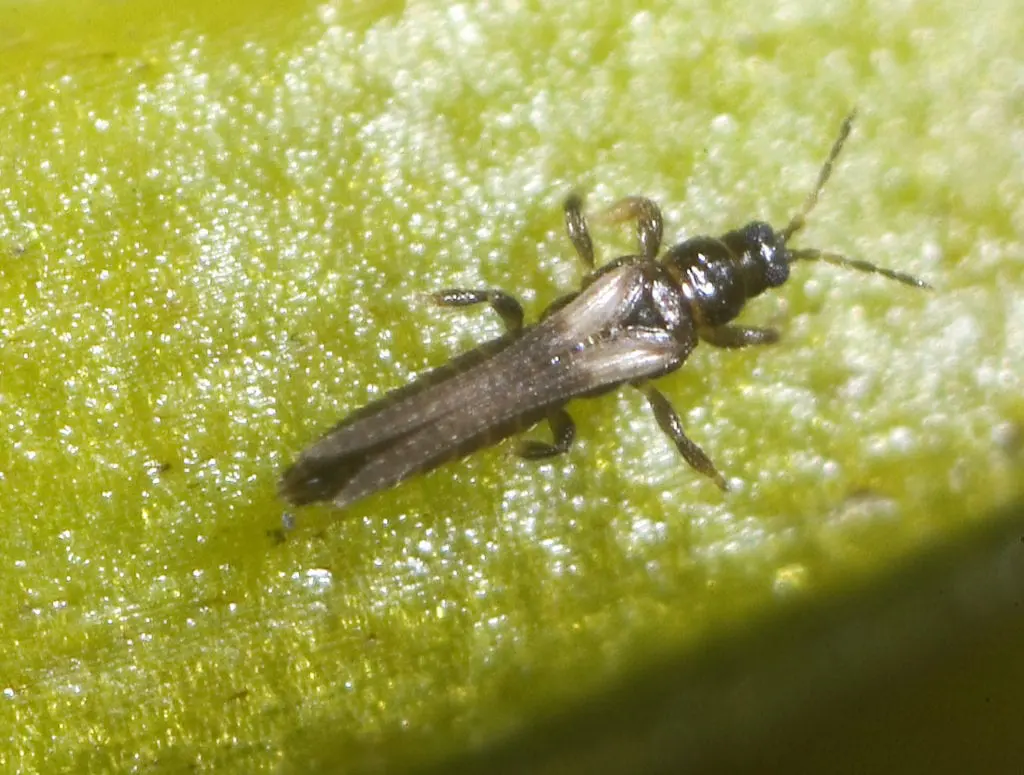Longtailed mealybug
Longtailed mealybugs (LTM) are sap sucking insects that can cause sooty moulds. It is common to find the odd mealybug on avocado leaves and fruit, but they are rarely a problem. Often well controlled by a range of predators and parasites until this is disrupted by sprays.
Juvenile and adult
- Juvenile stages are similar in shape and colour to adults.
- Adult are up to 3 mm long.
- Pinkish-grey bodies covered with white, powdery wax.
- A single dark stripe runs down the middle of the back.
- Typically compared to other mealybug – LTM have 2 pairs of tail filaments – one pair longer than the body and a second pair not as long.
- Very short antennae.

Fruit, leaves and shoots
- Occasionally found on fruit, leaves and shoots.
Life cycle
- There is no visible egg stage.
- Nymphs hatch immediately upon eggs been laid in soil.
- Soon after nymphs begin to feed, they exude a white, waxy covering over their bodies, giving them a mealy appearance.
- The time in developmental stages varies with temperature.
- The life-cycle takes approximately 4 weeks in summer and several months in winter.
- Three overlapping generations can occur in a year.
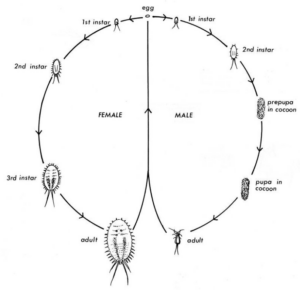
Diagram of the typical mealybug lifecycle. Image: JM Cox, Fauna of New Zealand.
When and where to monitor
- Monitor for adults using a 10x hand lens.
- Can be found all year round on orchard.
- Fruit sites are the primary sites for LTM monitoring under AvoGreen.
- Only a grouping or colony of 6 or more on any one fruit should count towards an infested site (see image below).
- Monitoring should focus on areas of recent broad spectrum insecticide use where a lack of natural enemies may have provided the opportunity for LTM populations to increase.

Implications
Longtailed mealybug is a quarantine pest therefore market access restrictions will apply to if it is found on fruit in the packhouse.

